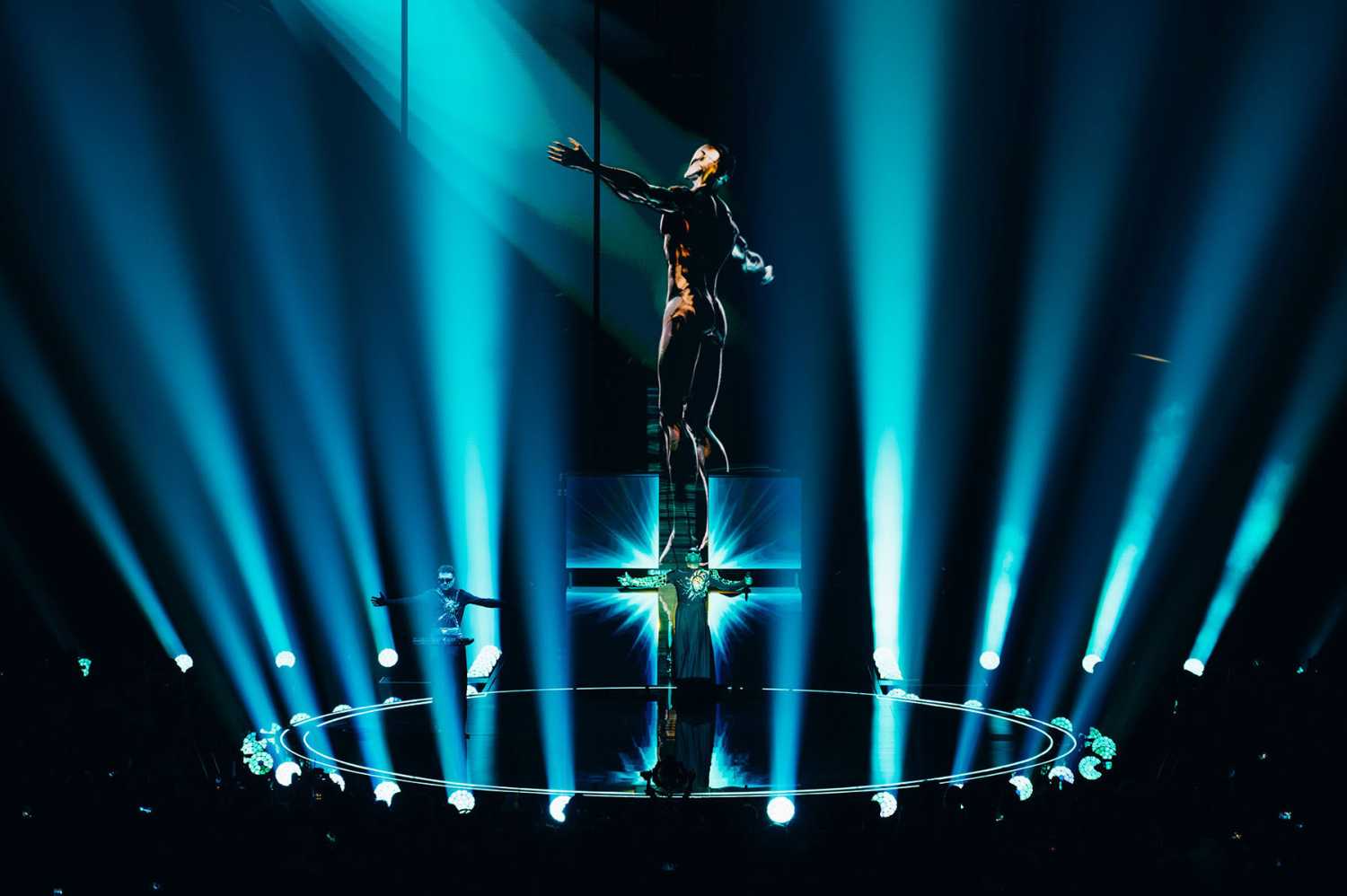Tim utilised over 600 Robe moving lights for his design which comprised approximately 2,500 luminaires plus 2 kilometres of LED tape, clocking up 17,500 individual light sources when counting the individual pixel cells of the various fixtures, all supplied via lighting equipment contractor, Neg Earth Lights.
For his first ESC, he collaborated closely with set designer Julio Himede, known for his work on major music broadcast shows like MTV’s VMAs and EMAs amongst others, also working on his first ESC.
Tim and his team created 37 lighting environments to showcase each delegation’s songs, keeping each of these micro-shows animated, fluid and energised, curating lighting and video interactively and simultaneously.
This enabled the end-goal of offering the clean, precise shots from multiple angles that resonated with camera directors Nikki Parsons, Ollie Bartlett and Richard Valentine, and translated brilliantly on the TV broadcast.
The set effectively surrounded the performance space with video, so lighting placement was challenging and had to be facilitated where there was no encroachment, whilst maintaining the architecture of the space and creating all the right moods.
The lighting rig included a 15-way Robe RoboSpot remote follow system running with 15 out of the 66 Robe Fortes in the building, which were positioned all around the arena, offering the flexibility of picking up artists from any angle, eliminating shadows and ensuring faces looked perfect.
The Forte parameters could all be controlled via the FOH grandMA3 consoles, leaving the operators free to concentrate on following the artists.
Other Robe elements included 152 x LEDBeam 150s, 84 x PAINTES, 123 x Spiiders, 190 TetraXs, 12 x Robe BMFL Blades and 12 x Robe PATT2013s, a fixture that Tim invented, and that he used on this occasion to light Latvia’s performance.
A back wall of TetraXs worked as stun-and-amaze effects for several artists. They were on the reverse side of seven LED columns making up the back wall of screen which rotated 360 degrees revealing the TetraXs, and made their presence felt during the performances of Israel, France, Finland and others.
An upstage wall of Paintes was revealed when the screens were rotated at 90 degrees.
Tim’s FOH team included Ukrainian LD and programmer Zhengyi Kostyra - a regular at Kyiv based rental company Alight - who worked as the overnight associate LD when on site, with James Scott as the overall lighting design associate.
Lead programmer was Tom Young and the other two main programmers were Marc Nicholson and Alex Mildenhall.
Follow spots were called by Louisa Smurthwaite, and Morgan Evans worked with Tim and Tom during the pre-viz period, which included four weeks at Neg Earth’s studio ahead of the get-in in Liverpool, when the process continued onsite as each delegation’s lighting looks evolved and were finessed.
Seven students on stage and lighting design and technical courses at two locally based academies - the Liverpool Institute of Performing Arts (LIPA) and Cheshire College - had the opportunity of working on Tim’s crew for the duration the event was on-site at the Arena. Five were RoboSpot operators and the other two were lighting technicians, all recruited via Robe UK’s NRG (Next Robe Generation) programme.
Additionally, Tim’s team co-ordinated with four vision engineers in the truck, and at the centre of ensuring all things lighting ran as smoothly as the surface of the best polished Eurovision glitterball, was gaffer Keith Duncan.
A full production report on the Eurovision Song Contest 2023 will be published in the June issue of LSi.

















